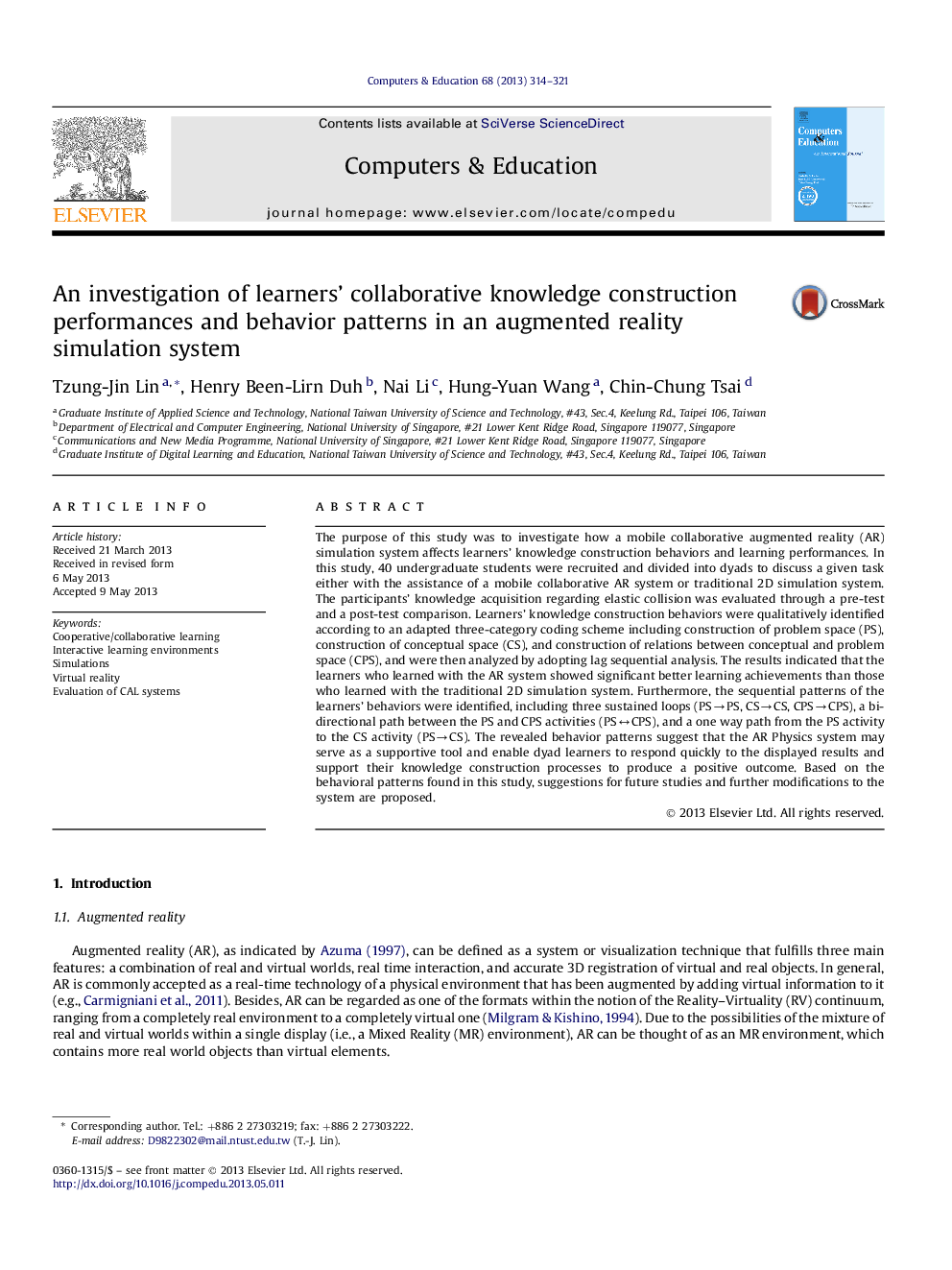| کد مقاله | کد نشریه | سال انتشار | مقاله انگلیسی | نسخه تمام متن |
|---|---|---|---|---|
| 348487 | 618189 | 2013 | 8 صفحه PDF | دانلود رایگان |

• Dyad learners' behaviors and outcomes in an augmented reality system were studied.
• Use of the augmented reality system improved learning outcomes.
• Learners' behavioral patterns in the augmented reality system were identified.
• Suggestions for future studies and further modifications to the system are proposed.
The purpose of this study was to investigate how a mobile collaborative augmented reality (AR) simulation system affects learners' knowledge construction behaviors and learning performances. In this study, 40 undergraduate students were recruited and divided into dyads to discuss a given task either with the assistance of a mobile collaborative AR system or traditional 2D simulation system. The participants' knowledge acquisition regarding elastic collision was evaluated through a pre-test and a post-test comparison. Learners' knowledge construction behaviors were qualitatively identified according to an adapted three-category coding scheme including construction of problem space (PS), construction of conceptual space (CS), and construction of relations between conceptual and problem space (CPS), and were then analyzed by adopting lag sequential analysis. The results indicated that the learners who learned with the AR system showed significant better learning achievements than those who learned with the traditional 2D simulation system. Furthermore, the sequential patterns of the learners' behaviors were identified, including three sustained loops (PS→PS, CS→CS, CPS→CPS), a bi-directional path between the PS and CPS activities (PS↔CPS), and a one way path from the PS activity to the CS activity (PS→CS). The revealed behavior patterns suggest that the AR Physics system may serve as a supportive tool and enable dyad learners to respond quickly to the displayed results and support their knowledge construction processes to produce a positive outcome. Based on the behavioral patterns found in this study, suggestions for future studies and further modifications to the system are proposed.
Journal: Computers & Education - Volume 68, October 2013, Pages 314–321